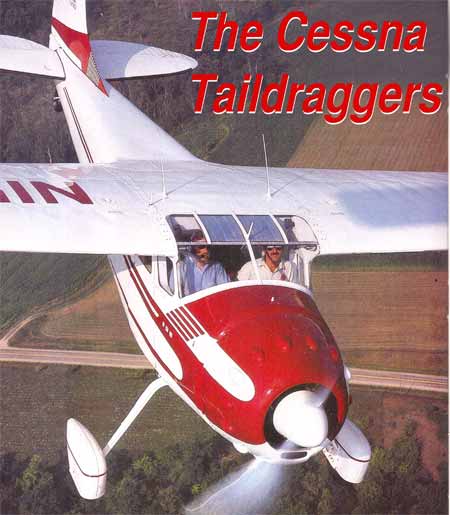
 |
Flying the Cessna Taildraggers |
Cessna Built a
Bunch of Tailwheel Airplanes and we Review Them All |
PAGE TWO
AlRMASTER
If contemplating an Airmaster — unless you are already an antiquer/restorer — be certain you either get an airplane that has been 100 percent restored or be prepared to have it done. Like the AW series, the wing is one gigantic slab of wood and restoring one is not a minor project. If the wood is bad, the project begins to assume the proportions of restoring the Spruce Goose. The fuselage is the usual steel tubing/fabric and all of the normal caveats apply. The tubing at the back of the fuselage should be inspected closely and, since the tail is cantilever, the unit should be given the once-over too. Airmasters are truly neat airplanes, but they are just far enough over the antique/classic fence that they should be reserved for the serious antique buff.
BAMBOO BOMBERS There is absolutely nothing wrong with wood in an airplane. Wood is as strong as any other material and less prone to certain types of wear. However, it is also a material that doesn't take kindly to not being treated well. With the dozens of blind places and areas that can collect water, the UC-78 is a termite hotel with a vacant sign hanging out front. If the wood is sound, the B-Bomber is built like a tank, and weighs about the same. Nearly all of the UC-78s were, at one time during their lives, nearly abandoned. Never thought of very highly as a multi-engine airplane (UC-78s make an Apache look good), as soon as they gave the slightest amount of trouble, the plane was usually parked and forgotten and this was easy to do, since most were sold for $1000 to $8500 right after the war. It was during this period of abandonment, and before Bamboo Bombers became sought after as Warbirds/classics/antiques, that most of the water damage was done. We are far enough away from the war now that most of the bad ones have long since sunk into the weeks to be reclaimed by nature. The few that have been restored have been gone through with a magnifying glass. But be forewarned: If the airplane hasn't had the spars and tail done recently, back off and take a closer look. As originally produced, the airplane mounted a pair of 245 hp R -755A Jacobs engines and, get this, wooden props! What a ground lover that thing must have been! Later, they were all equipped with two-position Ham Standards and still later with constant speeds. Very few of the airplanes survived the first few years after the war before being re-engined with R-680 Lycomings of at least 295 horsepower — these engines almost made an airplane out of the craft. Actually, the Bamboo Bomber is a lot of fun to fly. Although it's a taildragger, the plane lands like a really fat Cub and makes the pilot feel like an aerial Indiana Jones — or Sky King. Everything about the airplane is just funky enough to make it an absolute ball, with the possible exception of burning 13-15 gallons per side to go 145-160 mph. The cabin really is a cabin and this is one airplane that draws attention every time you pull up to the gas pump.
|